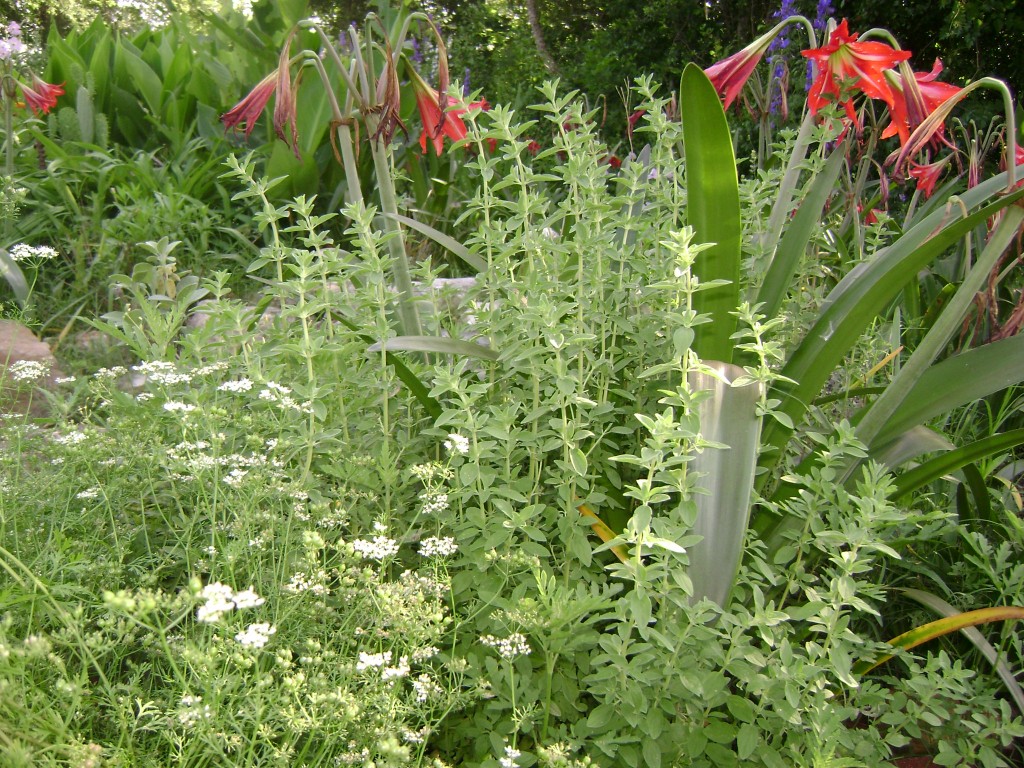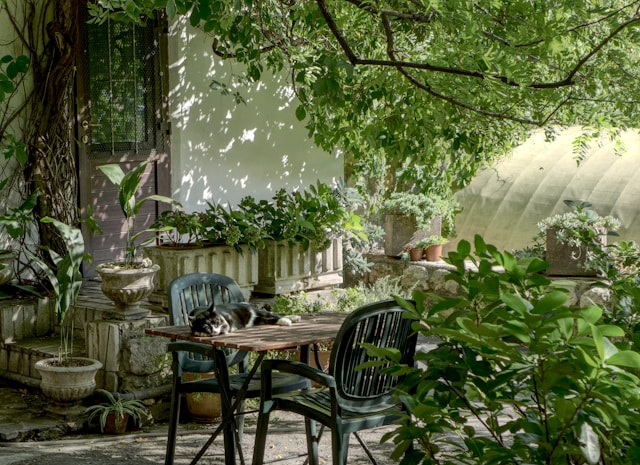As the Amaryllis begins to fade and the Cilantro begins going to seed, other herbs are at their peak in spring. The Oregano in this picture is just about at its height of wanting to bud and bloom. Keep a close eye and begin to harvest right before it wants to bud. This is when you will get the best flavor out of your oregano and is perfect for drying. Oregano is one of those herbs with a more intense flavor after it is dried.
While it has become long and leggy, I take my cuttings for the kitchen. I start with the longest stems and snip them (sort of thinning the plant out) by about 2/3rds length while trying to keep them even with some of the shorter and lower growing stems on the plant. This will make your plant bushier and fuller as well. I still like to have some go to bloom for the bees and beauty. The flowers are usually achieved from the shorter stems left uncut.
I guess I am a neat freak because I like to try and keep my cuttings at the same length too. That way it is neater to tie them off with jute or string to hang. I bring them indoors and slip an opened paper clip or wire through the string and secure it. To keep the dust off I like to slip a paper sack over the top and down over my cuttings. I then poke the wire through the sack and hang them to dry.
If you keep a few of the cuttings out, you can start new plants as well. Usually, 2 1/2 to 3-inch cuttings are best for propagation. Simply slide the lower leaves off of the cutting, revealing the bare stem. Dipping them in root stimulator before you place them in your moist pot of soil will get them off to a great start. You can either purchase Root Hormone or make your own by grinding aspirin or willow. It always makes a prettier plant if you use three cuttings per pot.
With milder winter temperatures and a warm spring, other herbs will be ready soon. The Spearmint here is near its budding time. It can be harvested and hung to dry as well. Mints are easily propagated by cuttings, but can simply be dug up and divided too.
Before the weather turns to the heat of summer many other perennial herbs do well for propagation by taking cuttings, such as your Sage and Rosemary.
For other annual herbs such as Cilantro, Dill, Parsley, and Fennel, simply wait until the seeds begin turning brown. Cut them off the plant being careful not to let them shatter and place them upside down in paper sacks to finish drying. After a few weeks, you can shake the seeds loose in the bags to collect them into an airtight container in a cool and dry storage area.
Many herbs are left unharvested completely in my garden. Using this method will allow many of my annual herbs to become naturalized. Basil, Borage, Dill, and Cilantro are just a few in milder climates that will reseed themselves and come back when the temperatures are right for them to germinate again in the fall.
Enjoy those fragrant herbs hanging in your kitchen this spring and remember to leave some for the wildlife. You will have a healthier garden and plenty of healthy birds and bees and butterflies by leaving a few flowers and stems in your garden.
- Wild Dagga Motherwort Medicinal Herb - November 11, 2013
- Grow The Best Organic Lettuce - November 4, 2013
- Amish Hot Pepper Mustard - October 23, 2013

